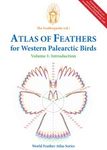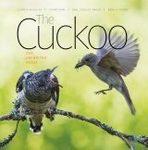Monograph
By: Graham R Martin(Author)
270 pages, 100+ colour photos and colour & b/w illustrations, colour tables
Sensory biologist Graham Martin takes the reader deep into the sensory world of birds, showing how the five senses interact with each other to help birds navigate their world, and how our actions and infrastructure are interfering with them.
![Bird Senses Bird Senses]()
Click to have a closer look
About this book
Customer reviews
Biography
Related titles
Recommended titles
About this book
Graham Martin takes the reader deep into the world of birds from a new perspective, with a 'through birds' eyes' approach to ornithology that goes beyond the traditional habitat or ecological point of view. There is a lot more to a bird's world than what it receives through its eyes. Bird Senses shows how all the senses complement each other to provide each species with a unique suite of information that guides their daily activities.
The senses of each bird, and the information that they provide, have been tuned through natural selection to solve the challenges of different environments and tasks: from spotting a carcass on a hillside, to pecking at minute insects, from catching fish in murky waters, to navigating around the globe.
The reader is also introduced to the challenges posed to birds by the obstacles with which humans have cluttered their worlds, from power lines to windowpanes. All of these challenges need explaining from the birds' sensory perspectives so that effective mitigations can be put in place.
Bird Senses leads the reader through a wealth of diverse information that is made understandable through the use of over 100 colour illustrations and photographs, and accessible text. The result is a book that is highly readable for keen birdwatchers and naturalists, as well as more specialist readers.
The author has researched the senses of birds throughout a 50-year career in ornithology and sensory science. He has always attempted to understand birds from the perspective of how sensory information helps them adapt to a range of environments. He has published papers on more than 60 bird species, from Albatrosses and Penguins, Spoonbills and Kiwi. His first fascination was with owls and nighttime, and owls have remained special to him throughout his career. He has collaborated and travelled widely, and pondered the diverse sensory challenges that birds face in the performance of different tasks in different habitats, from mudflats and murky waters, to forests, deserts and caves. In recent years he has focused on how understanding bird senses can help reduce the very high levels of bird mortality attributable to human artefacts, particularly wind turbines, power lines and gill nets.
Customer Reviews (1)
-
Well illustrated and thorough
By
Keith
2 Mar 2021
Written for Paperback
Graham Martin is an expert on the senses of birds and has written many papers published on vision and hearing in birds. This book is aimed at the general audience who wants to know more. The section on vision is the longest and explores in detail how birds see – comparing different species and their head shapes and result position of eyes. Some birds really do have eyes that can see in front and behind, while others are only able to look forwards. There are two chapters on birds in the dark, and also one on birds underwater – something I had not expected! Compared to his technical papers and books this one is attractively illustrated with colour photographs. This makes it an easier read, but I have to say that as someone who seeks an easy explanation to a complex situation, sometimes I was left a bit disappointed. You’ll definitely find what you are wanting in this book, but you may end up searching for it. Scientists don’t go for quick explanations, so don’t expect to find any here. But what you will find is comprehensive and trustworthy.
2 of 2 found this helpful
-
Was this helpful to you? Yes No
Biography
Graham Martin established the Centre for Ornithology at the University of Birmingham and also ran and taught on extensive programmes in ornithology for Extramural Students throughout the West Midlands.
Monograph
By: Graham R Martin(Author)
270 pages, 100+ colour photos and colour & b/w illustrations, colour tables
Sensory biologist Graham Martin takes the reader deep into the sensory world of birds, showing how the five senses interact with each other to help birds navigate their world, and how our actions and infrastructure are interfering with them.
"[...] The average ornithologist gives little thought to the issues covered here and so the book makes a valuable contribution to knowledge. I have one concern: there is an earlier book on the same subject by the same author (The Sensory Ecology of Birds, OUP 2017). Inevitably the texts overlap to some extent. One feature which may influence some readers is that this work lacks a bibliography, which is frustrating for those who wish to look further into a subject: in contrast, although slightly more out-of-date, the earlier work contains a 20-page bibliography containing perhaps some 600 references."
– Christopher Perrins, Ibis, 2021
"[...] The present book, aimed principally at a more general audience [...], covers avian vision, hearing, smell, touch and taste as well as the way birds perceive the earth's magnetic field [...] With numerous attractive colour photographs and diagrams throughout, this is an attractively produced book, but I was left wondering it was the author's or the publisher's decision not to include any reference [...]"
– Tim Birkhead, British Birds 114, January 2021
"Useful analogies abound and the explanations given allow us, however briefly, to submerge into the sensory environment of birds, in their incredible diversity. This is a book you will want on your shelves and may well revisit."
– Bo Beolens, Fatbirder
"Bird Senses bundles the available knowledge and will be a milestone for a long time."
– Walter Belis, Alauda
"Bird Senses will undoubtedly appeal to (amateur) ornithologists, nature lovers and specialists."
– Walter Belis, Natuur.oriolus










































